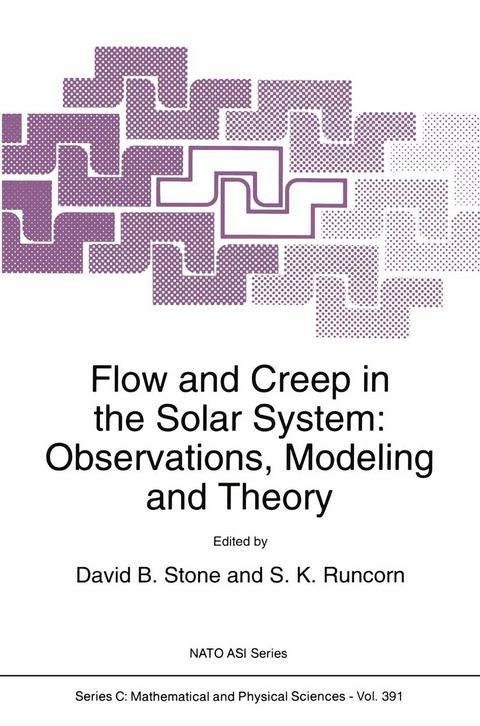
Flow and Creep in the Solar System: Observations, Modeling and Theory
Kluwer Academic Publishers (Verlag)
9780792321484 (ISBN)
Convection and Flows in the Sun and Stars.- A Review of the Dynamics of the Lower and Upper Thermosphere.- Reversals of the Solar Source Surface Magnetic Field and of the Planets.- Planetary Magnetism Re-Visited.- Some Reflections on Solid State Convection in the Mantles of the Earth, Moon and Terrestrial Planets.- Rotating Spherical Convection with Applications to Planetary Systems.- Geomagnetism and Inferences for Core Motions.- Energetic Aspects of Thermal Convective Magnetohydrodynamic Dynamos.- Preferred Bands of Longitude for Geomagnetic Reversal VGP Paths: Implications for Reversal Mechanisms.- Parameterization of Temperature- and Stress-Dependent Viscosity Convection and the Thermal Evolution of Venus.- Complex Flow Structures in Strongly Chaotic Time-Dependent Mantle Convection.- An Explicit Inertial Method for the Simulation of Viscoelastic Flow: An Evaluation of Elastic Effects on Diapiric Flow in Two- and Three-Layers Models.- Dynamically Supported Topography at the Earth’s Surface and the Core-Mantle-Boundary: Influences by a Depth-Dependent Thermal Expansivity and a Chemical Boundary Layer.- 3-D Numerical Investigation of the Mantle Dynamics Associated with the Breakup of Pangea.- Subduction Zones, Magmatism, and the Breakup of Pangea.- Relationship between Hotspots and Mantle Structure: Correlation with Whole Mantle Seismic Tomography.- Porous Media Flow in Granitoid Magmas: An Assessment.- Dynamics of Magma Chambers.- A Mechanism for Spontaneous Self-Perpetuating Volcanism on the Terrestrial Planets.- High Latitude Ocean Convection.- Analogous Modes of Convection in the Atmosphere and Ocean.- The Dynamics of Subcritical Double-Diffusive Convection in the Southern Ocean: An Application to Polynyas.- Strategies for Modelling Climate Changes.- Ice SheetDynamics.- Glacier Flow Modeling.
| Reihe/Serie | NATO Science Series C ; 391 |
|---|---|
| Zusatzinfo | XVI, 506 p. |
| Sprache | englisch |
| Maße | 156 x 234 mm |
| Themenwelt | Naturwissenschaften ► Geowissenschaften ► Geologie |
| Naturwissenschaften ► Geowissenschaften ► Geophysik | |
| Naturwissenschaften ► Physik / Astronomie ► Astronomie / Astrophysik | |
| ISBN-13 | 9780792321484 / 9780792321484 |
| Zustand | Neuware |
| Informationen gemäß Produktsicherheitsverordnung (GPSR) | |
| Haben Sie eine Frage zum Produkt? |
aus dem Bereich


